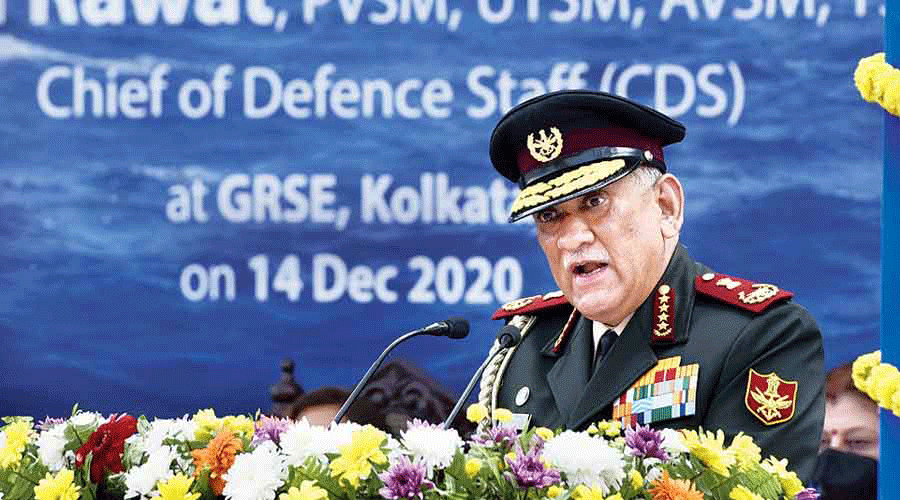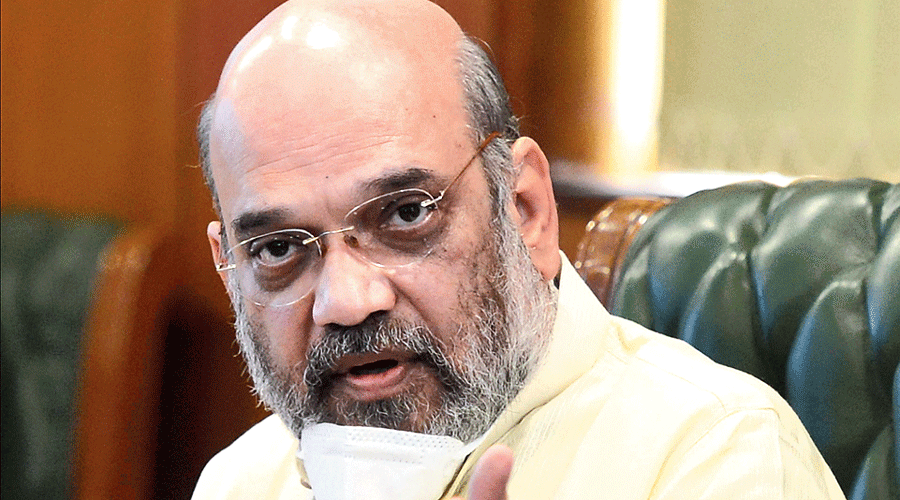Officers with the second-highest rank in the military can be appointed the Chief of Defence Staff (CDS) under new rules, leaving the door ajar for the three service chiefs to be superseded while filling India’s top military post.
The new rules make any serving or retired lieutenant general, air marshal and vice admiral aged below 62 eligible to be CDS, who functions as the principal military adviser to the Prime Minister.
Until now, the eligible rank was not explicitly mentioned. But as Gen. Bipin Rawat was a four-star general and the was the sole occupant of the newly created top post, it was assumed that only a service chief would be appointed as CDS.
Service chiefs in the army, air force and navy hold the ranks of general, air chief marshal and admiral.
The new rules make it almost — but not entirely — difficult for a service chief who has completed the tenure to become the Chief of Defence Staff. The cut-off age for appointment as CDS has been set at 62.
The army, navy and air force chiefs have to retire after a three-year tenure or when they turn 62, whichever is earlier. Unless an officer becomes a service chief early and retired before 62, it will not be possible for the service chief to be appointed as the CDS under the new guidelines.
The new guidelines mean that even a serving/retired lieutenant general (three-star officer) or equivalent in the navy and air force are now eligible, in addition to the service chiefs, for the post of the CDS.
A military veteran expressed apprehension at the Centre’s move to broaden the scope of eligible officers for the CDS post. “Let’s hope the post does not become just another post-retirement job,” he said.
A gazette notification modifying the army, air force and navy acts to accommodate the changes has been issued.
The notification for the army says: “The central government, may, if considered necessary, in public interest, so to do, appoint as Chief of Defence Staff an officer who is serving as lieutenant general or general or an officer who has retired in the rank of lieutenant general or general but has not attained the age of sixty-two years on the date of his appointment.”
On December 31, 2019, Gen. Rawat was appointed as the first Chief of Defence Staff, a day before he was due to retire following a three-year tenure as the army chief. He was aged 61 years, nine months when he became CDS.
The post of CDS was conceived after the Kargil conflict and it was created to facilitate better interoperability among the three armed forces.
Although it is not an operational post, the CDS is the main military adviser to the Prime Minister and the defence minister on matters that include the nuclear command.
Sources in the defence ministry said the process for the creating the proposed theatre commands of the armed forces had slowed down owing to the Centre’s delay in appointing a new chief of defence staff.
“With the new guidelines in place, we are hopeful that the Centre will appoint a new CDS soon,” said a ministry official.
The Narendra Modi government had last year formed an expert committee led by the first CDS, Gen. Rawat, to carry out consultations with the three services to decide the way forward on the theaterisation of the military.
Gen. Rawat was given the task of facilitating the restructuring of the military commands for optimal utilisation of resources through the establishment of unified theatre commands.
But Gen. Rawat’s death in a chopper crash last December has halted the process of the creation of the proposed theatre commands, sources said.
The theaterisation of the armed forces was aimed at ensuring synergy among the tri-services chiefs to deal with security challenges and future wars.
The plan, according to the sources, is to have five theatre commands. Each will have units of the army, the navy and the air force, and all will work as a single entity looking after specified geographical territories under an operational commander.
At present, the armed forces have 17 service commands across the country, each assigned exclusively to one among the three forces. The Indian Army and the Indian Air Force have seven commands each while the Indian Navy has three.












